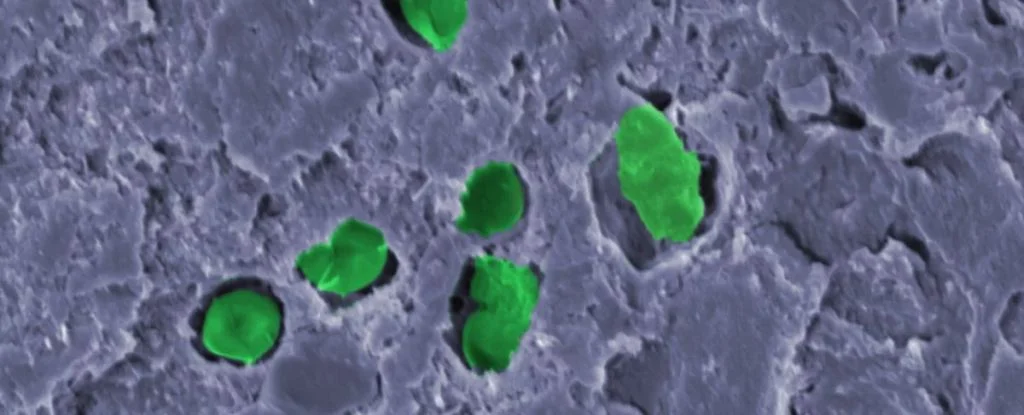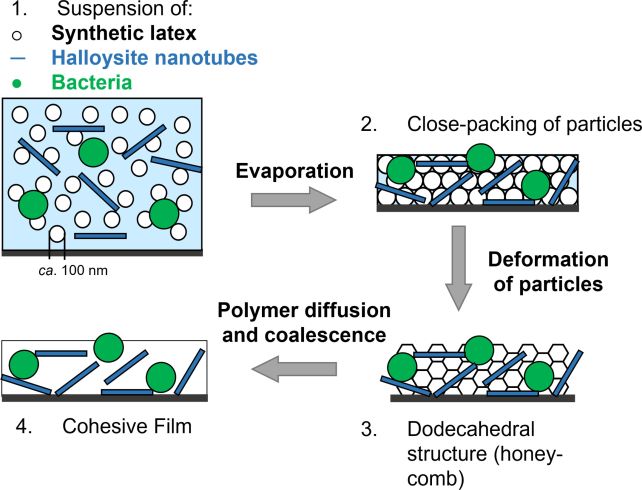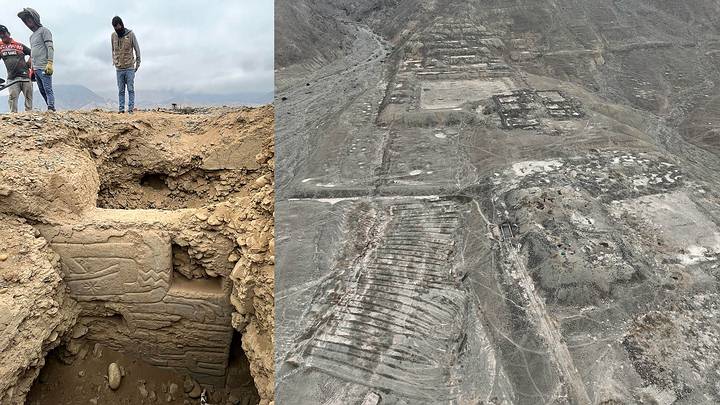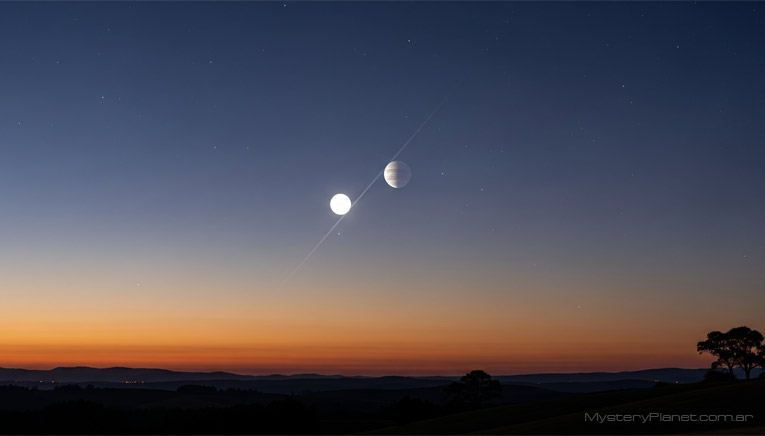New way to produce oxygen on Mars has been developed
UK scientists have developed a biological coating, a “living paint,” capable of producing oxygen in a Martian habitat.
Microscopy image of the bacteria nested in the ink (Krings et al., University of Surrey)
The exploration of Mars has always intrigued humanity, and as technology advances, this vision becomes more and more tangible. However, creating a habitable environment on the Red Planet is a monumental challenge that requires innovation, sustainability and creative solutions.
Recently, scientists from the UK took an important step in this direction by using desert bacteria, specifically Chroococcidiopsis cubana, to develop a biological coating, a “living paint”, capable of supplementing oxygen on Mars.
“With the increase in greenhouse gases, especially CO2, in the atmosphere and concerns about water scarcity due to rising global temperatures, we need innovative, sustainable and environmentally friendly materials,” says bacteriologist Suzie Hingley-Wilson, from the University of Surrey.
“Mechanically robust, off-the-shelf biocoatings, or ‘living inks’, can help address these challenges by reducing water consumption in bioreactor-based processes that are normally water-intensive.”
These bacteria, found in deserts and extreme places on Earth, play a crucial role in the potential Martian ecosystem. Chroococcidiopsis cubana performs a peculiar type of photosynthesis that optimizes light absorption in extremely low light conditions, making it a survivor in the challenging conditions of Earth’s deserts and possibly on Mars.
The main highlight of these bacteria is their ability to absorb carbon dioxide (CO2) and, through photosynthesis, transform it into organic compounds, releasing oxygen as a by-product. This property becomes essential when thinking about creating a sustainable environment on Mars, where human respiration requires a continuous source of oxygen.
The team of scientists led by microbiologist Simone Krings, from the University of Surrey, has developed a biological coating, a kind of living paint, which incorporates these bacteria. This coating needs to be resistant and durable, without harming the bacteria it contains.
Diagram illustrating how biopainting is done (Krings et al., Microbiol. Spectr., 2023)
The biocoating matrix must be porous enough to allow hydration and cell transport, but also mechanical and robust. To meet these requirements, the scientists created a mixture of latex with nano-clay particles, which encapsulate the bacteria safely.
The effectiveness of this living ink has been tested, and the results are promising. During a month of observation, the paint steadily released oxygen at a rate of up to 0.4 grams of oxygen per gram of biomass per day.
This may not be enough to meet all the oxygen needs of a Martian habitat, but it represents a significant step in the right direction. In addition, the paint absorbed CO2, helping to reduce the amount of this gas in the habitat’s atmosphere.
The scientists have named their innovation “Green Living Paint”, highlighting the potential of using biological systems to improve air quality in artificial environments.
This could not only benefit future space missions to Mars, but also offer innovative solutions to challenges on Earth, such as reducing water consumption in bioreactor-based industrial processes.
It is important to note that Chroococcidiopsis cubana bacteria are known for their remarkable ability to survive in extreme environments, such as droughts and high levels of exposure to ultraviolet radiation.
See also: Humans and extinct species met 40,000 years ago
“Photosynthetic Chroococcidiopsis have an extraordinary ability to survive in extreme environments, such as droughts and after high levels of exposure to UV radiation,” says Krings. “This makes them potential candidates for colonizing Mars.”
These characteristics make them promising candidates for colonizing Mars, where conditions are harsh and challenging.
In summary, research into desert bacteria such as Chroococcidiopsis cubana and their application in biological coatings represent an exciting advance in the field of space exploration and the search for sustainable solutions.
This innovation not only brings us closer to realizing our dream of inhabiting Mars, but also offers promising prospects for tackling environmental challenges on Earth. The union of science and nature could be the key to a brighter future on our planet and beyond.
Via: Verdade Ufo








